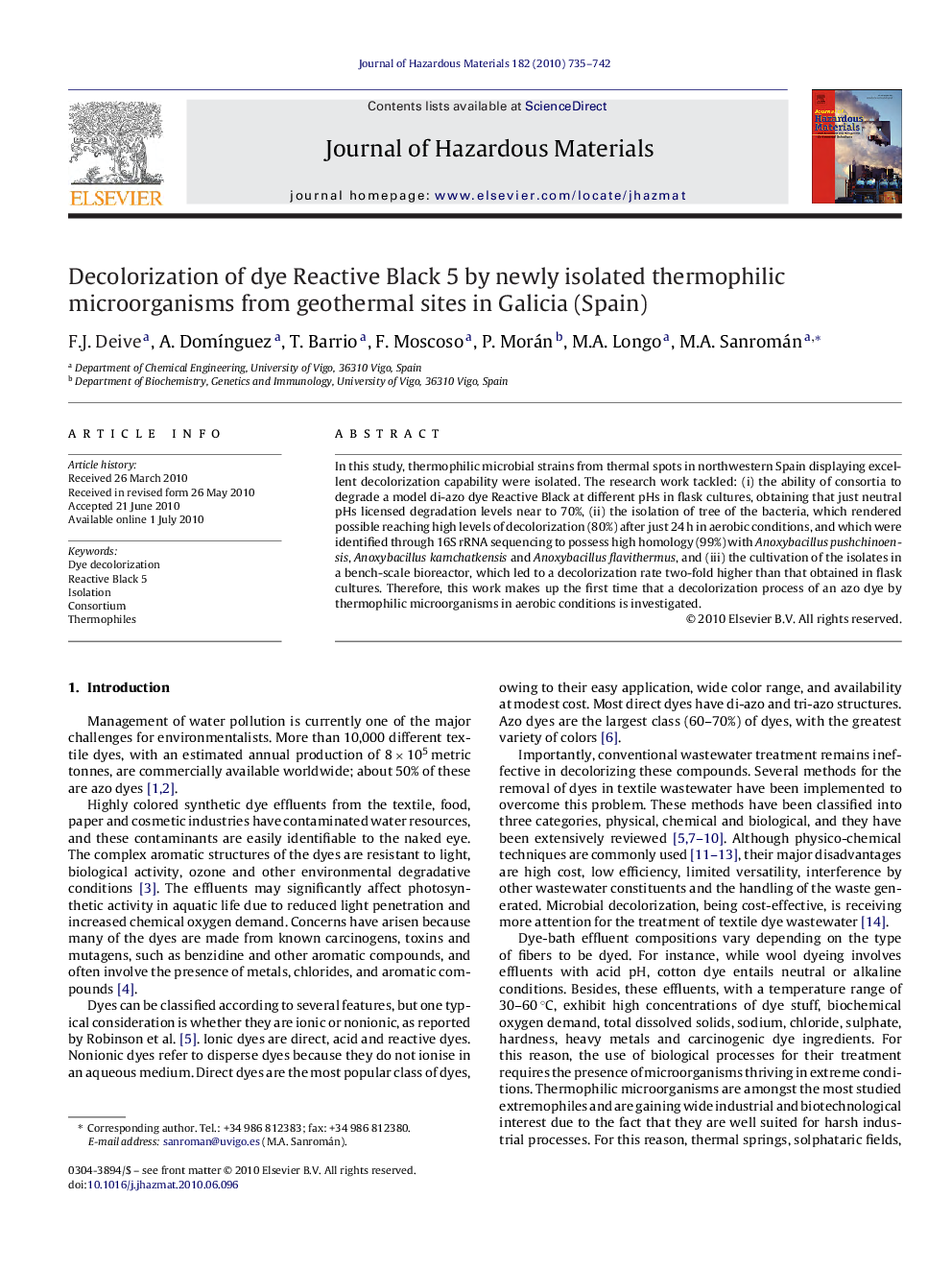| Article ID | Journal | Published Year | Pages | File Type |
|---|---|---|---|---|
| 579748 | Journal of Hazardous Materials | 2010 | 8 Pages |
Abstract
In this study, thermophilic microbial strains from thermal spots in northwestern Spain displaying excellent decolorization capability were isolated. The research work tackled: (i) the ability of consortia to degrade a model di-azo dye Reactive Black at different pHs in flask cultures, obtaining that just neutral pHs licensed degradation levels near to 70%, (ii) the isolation of tree of the bacteria, which rendered possible reaching high levels of decolorization (80%) after just 24Â h in aerobic conditions, and which were identified through 16S rRNA sequencing to possess high homology (99%) with Anoxybacillus pushchinoensis, Anoxybacillus kamchatkensis and Anoxybacillus flavithermus, and (iii) the cultivation of the isolates in a bench-scale bioreactor, which led to a decolorization rate two-fold higher than that obtained in flask cultures. Therefore, this work makes up the first time that a decolorization process of an azo dye by thermophilic microorganisms in aerobic conditions is investigated.
Related Topics
Physical Sciences and Engineering
Chemical Engineering
Chemical Health and Safety
Authors
F.J. Deive, A. DomÃnguez, T. Barrio, F. Moscoso, P. Morán, M.A. Longo, M.A. Sanromán,
